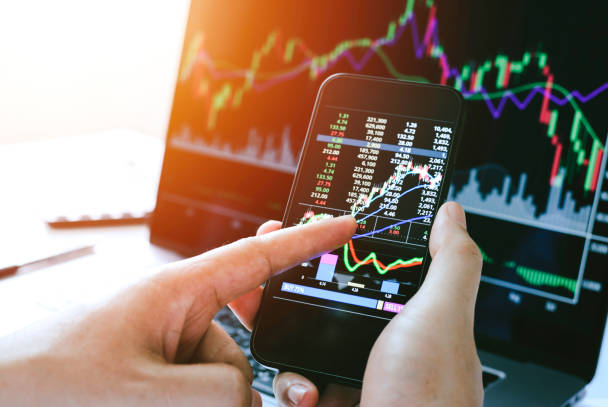Timing UAE Stock Buys in 2025: Market Cycles, Oil Trends & Investor Positioning
In 2025, the UAE stock market presents a unique opportunity for both regional and international investors. With oil prices recalibrating after a volatile 2023–2024 period and government reforms deepening capital market sophistication, the key to success lies in timing — not just picking the right stocks.

This guide breaks down the core elements every investor should consider when entering or rebalancing a UAE-based equity portfolio in 2025: where we are in the economic cycle, how oil trends shape sentiment, and how investor flows and positioning data can serve as entry signals.
Understanding Market Cycles in the UAE
If you’re planning to buy stocks in UAE, it’s smart to understand how the local market moves. The UAE’s exchanges — especially the DFM (Dubai Financial Market) and ADX (Abu Dhabi Securities Exchange) — tend to follow distinct cycles shaped by both global conditions and local policy shifts.
In 2024, the market saw cooling growth after a record-setting 2022, but recent earnings and IPO pipelines suggest a renewed expansion phase may be starting in 2025.
Unlike developed markets, where cycles are typically led by consumer sentiment or rate policy alone, UAE equity cycles hinge on a few key signals:
- Real estate price momentum (a proxy for domestic liquidity)
- Foreign direct investment inflows
- Timing of sovereign wealth fund activity
- Local IPO issuance (high IPO activity often signals confidence peaks)
In early 2025, ADX-listed blue chips have begun outperforming mid-cap names, a common early-cycle indicator. The Central Bank of the UAE has also hinted at maintaining stable interest rates, which adds to investor appetite.
Oil Prices Still Drive the Pulse of UAE Stocks
Even with diversification efforts, energy remains central to the UAE’s equity sentiment. In 2024, Brent crude prices ranged from $78 to $94 per barrel, with significant swings based on OPEC+ supply moves and geopolitical shocks. In 2025, most analysts forecast that oil will stabilize between $85 and $90, supported by moderate global demand and supply discipline.
This matters because:
- Oil-linked revenue affects UAE fiscal balance, which in turn impacts government and sovereign wealth investment.
- Investor sentiment tends to improve during oil upswings, especially among local traders who track crude as a lead indicator.
- Sector rotation occurs when oil surges — banks, logistics, and utilities often outperform, while real estate can lag.
Even tech and telecom stocks with little direct exposure to oil tend to move in sympathy due to local fund reallocations.
The Role of Government Spending and Vision 2030 Initiatives
The UAE’s structural reform and investment plans under the “We the UAE 2031” strategy continue to inject momentum into equity markets. Key programs — such as green energy funding, infrastructure PPPs, and AI-based digital economy pushes — are not just political statements. They directly influence which sectors receive capital and policy tailwinds.
By mid-2025, the market has experienced:
- Continued capital injections into ADNOC subsidiaries, spurring follow-on IPO waves.
- The UAE AI Office partnering with global tech firms, impacting sentiment on AI-linked stocks.
- Progress on Etihad Rail’s national rollout, boosting materials and industrial names.
Leading stock ideas related to government projects — from hydrogen to logistics — often emerge 6–12 months before full re-ratings.
Investor Positioning Data: Who’s Buying UAE Stocks Right Now?
Understanding investor flows is key to gauging market timing. In 2025, positioning data shows a renewed appetite from both local institutions and global emerging market funds.
Here are a few recent signals:
- UAE equity ETFs listed in Europe and Asia saw net inflows of over $900 million in Q1 2025.
- Mubadala and ADQ increased their domestic equity allocations, especially in the healthcare and tech verticals.
- Sovereign wealth funds from Singapore and Norway have reopened exposure to Abu Dhabi-listed infrastructure and energy companies.
Meanwhile, retail brokerage activity (tracked through platforms like Sarwa and ADX Direct) has shown a surge in new accounts and higher turnover per user — both early signs of local retail optimism.
Sector Rotation: Where the Smart Money Is Flowing
If you are trying to time entry points, look beyond indices and focus on sector rotation. In 2025, a few themes are emerging:
- Green Energy & Utilities: As the UAE doubles down on its clean energy agenda, names tied to solar, nuclear, and water conservation have gained steady institutional interest.
- Banks: With stable rates and solid dividend yields, UAE banks remain a safe haven and offer some of the highest ROEs in the region.
- Healthcare & AI: M&A activity is expected in the diagnostics and medtech spaces, supported by UAE’s AI-healthcare partnership initiatives.
Meanwhile, legacy real estate plays remain mixed. While high-end properties continue to rise, the overhang from 2023’s oversupply may still weigh on mid-tier developers.
Timing Signals: When Is the Right Moment to Buy?
While market timing is never perfect, the following signals can help UAE-based investors make more confident entry decisions:
- Oil Breakouts: Brent crude breaking past technical resistance (e.g., $95) often leads to a rally in DFM and ADX over the following 2–4 weeks.
- IPO Windows: Periods just before or after large IPOs often spark a broader market uplift, as liquidity is recycled into new offerings.
- Dividend Announcements: UAE stocks are highly dividend-sensitive. Q1 and Q4 earnings seasons are typically followed by strong price action in high-yield names.
- Ramadan and Post-Summer Rally: Historically, UAE markets see increased volumes and positive price moves after Ramadan and the summer lull.
Investors using technical analysis often track moving averages and RSI levels for names like First Abu Dhabi Bank, Emaar, and ADNOC Distribution as timing tools.
Building a UAE-Focused Stock Portfolio: Practical Allocation Tips
For 2025, a UAE-based diversified investor might consider the following allocation framework:
- 30–40% Large-cap financials and energy (stable dividends, oil-sensitive)
- 20% Mid-cap infrastructure and AI plays (growth, reform-linked)
- 15–20% Defensive names in healthcare and consumer staples
- 10–15% IPO pipeline exposure or speculative picks based on new projects
This kind of balance helps manage oil and macro sensitivity while still allowing room for outperformance.
Risks to Watch in 2025
Even with a positive outlook, investors should remain aware of risks that could shift the UAE stock market narrative:
- Oil Price Shock: A global recession or overproduction by OPEC+ could derail oil-linked revenues.
- Regulatory Overreach: While reforms have mostly been market-friendly, sudden policy shifts could unsettle investor confidence.
- Liquidity Dry-Up: If global rates stay high, capital inflows to EM markets like the UAE may slow.
- Geopolitical Tensions: The region remains exposed to headline risk from surrounding conflicts, even if the UAE is politically stable.
These risks underscore the importance of staggered entries and using sector rotation to spread exposure.
Final Takeaway: Watch the Flow, Not Just the News
Timing stock buys in the UAE is more than reacting to headlines. It requires watching investor flows, sector sentiment, oil cycles, and government reform momentum.
For retail investors, that means being patient but alert — waiting for moments when both sentiment and structure align. For institutional investors, it means building signals into your models that include oil volatility, IPO schedules, and positioning from sovereign players.
2025 is not about chasing hype. It is about entering with discipline — and knowing how to read the map before the market moves.





